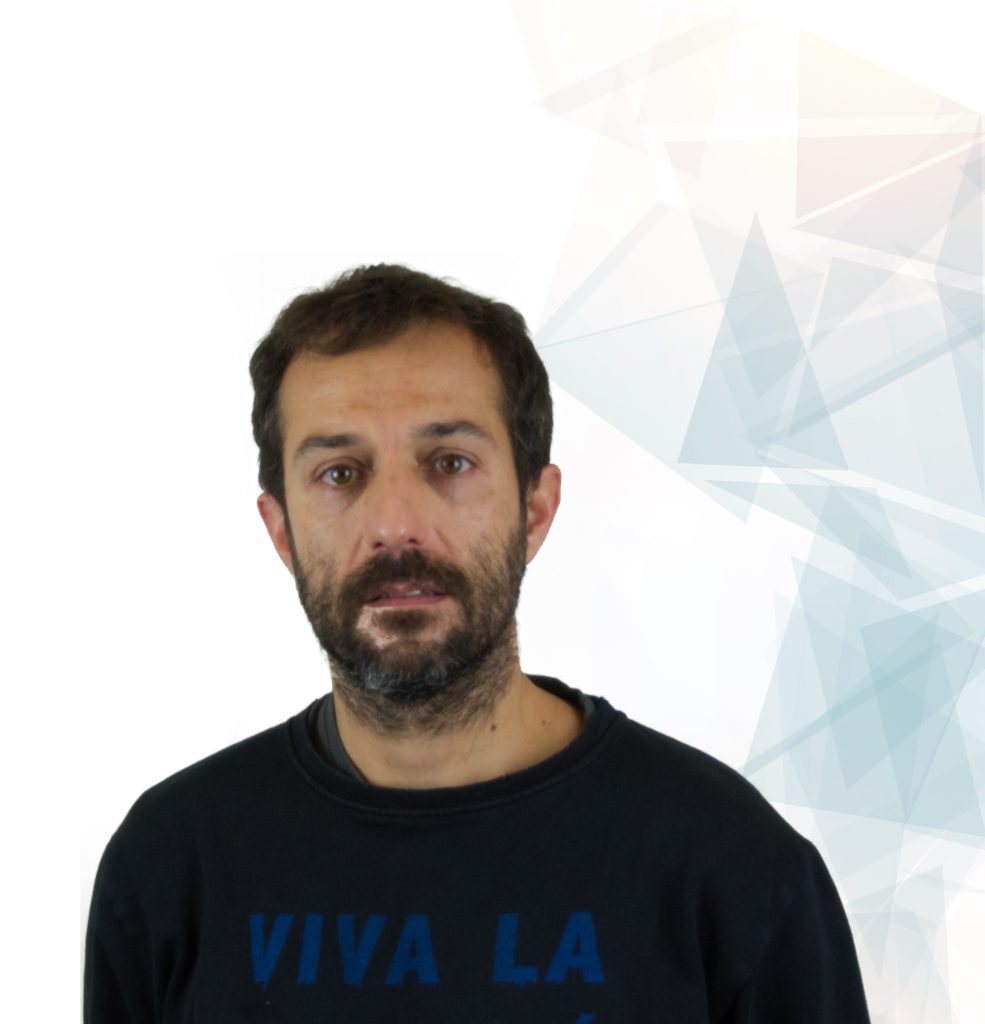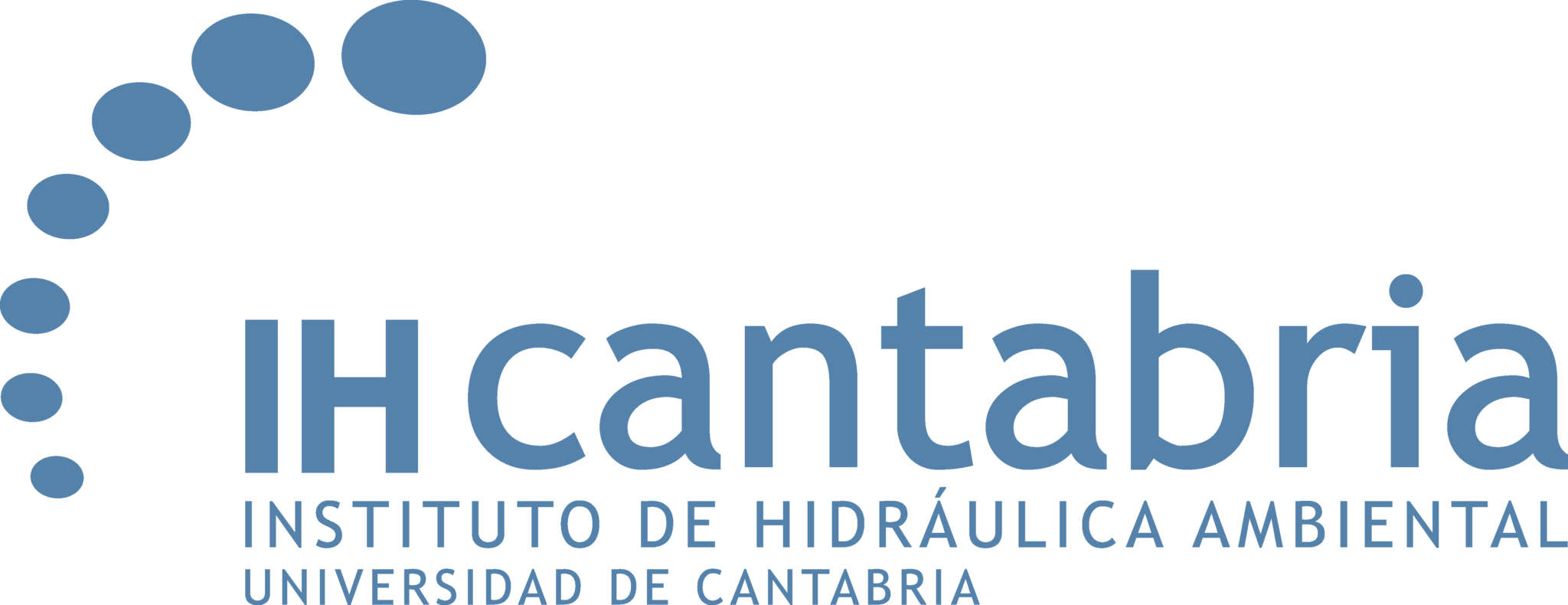JAVIER FRANCISCO BÁRCENA
Biography
Researcher at IHCantabria who focuses his work on numerical modelling and methodology development within the field of estuarine hydrodynamics and water quality. He studied Chemical Engineering at the Universidad de Cantabria, carrying out his last year at Technische Universiteit Delft (Delft, Netherlands). After graduating, he studied a Master of Science at the Universdad de Cantabria in Environmental Water Systems Management, presenting his Master Thesis: “Calculation Procedure to define environmental risk zones due to industrial discharges in shallow water estuaries”.
His investigation began in February 2008 by means of a predoctoral fellowship granted by IHCantabria, combining that task with master studies. Since August 2010 he obtained a FPI scholarship (BES-2010-032763) associated to the research project QEST (CGL-2009-10620), where he collaborated and performed his Doctoral Thesis in Environmental Hydraulics with International mention in November 2015, entitled “Development of a methodology for environmental risk zoning generated by the discharge of industrial wastewaters in estuarine areas”, being Extraordinary Doctoral Award from the Universidad de Cantabria 2017.
Javier has participated in several contracts with the Administration and companies and in competitive I+D+i research projects. He is also staff member of the the Estuarine Coastal Sciences Association (ECSA), the Coastal and Estuarine Research Federation (CERF) and the European Geosciences Union (EGU). Because of his research at IHCantabria, he has published 14 SCI articles and participated in 9 international and 5 national conferences.
RESEARCH LINES
Develop and apply numerical models and mathematical tools based on machine learning for the calculation of hydrodynamics and water quality in coastal areas.
Contribute innovative methodologies for the implementation of Regulations in the area of coastal waters policy.
Analyze the influence of environmental variability on hydrodynamic processes.
Deepen the study of the processes that govern the transport and mixing of substances in estuaries.
PUBLICATIONS
Bárcena, J. F. (2015). Desarrollo de una metodología para delimitar zonas de mezcla de vertidos industriales en estuarios. Development of a methodology to allocate mixing zones of industrial discharges in estuaries [Thesis, Universidad de Cantabria]. In TDR (Tesis Doctorales en Red). http://www.tdx.cat/handle/10803/329011
Bárcena, J. F., Camus, P., García, A., & Álvarez, C. (2015). Selecting model scenarios of real hydrodynamic forcings on mesotidal and macrotidal estuaries influenced by river discharges using K-means clustering. Environmental Modelling & Software, 68, 70–82. https://doi.org/10.1016/j.envsoft.2015.02.007
Bárcena, J. F., Claramunt, I., García-Alba, J., Pérez, M. L., & García, A. (2017). A method to assess the evolution and recovery of heavy metal pollution in estuarine sediments: Past history, present situation and future perspectives. Marine Pollution Bulletin, 124(1), 421–434. https://doi.org/10.1016/j.marpolbul.2017.07.070
Bárcena, J. F., García, A., & Álvarez, C. (2016). An integrative methodology to analyse the location of the new Suances Waste Waters Treatment Plant based on the carrying capacity of the Suances Estuary. International Symposium on Outfall Systems, 2016, 1–10.
Bárcena, J. F., García, A., Álvarez, C., & Juanes, J. A. (2012). First-Order Assessment to Delimitate Environmental Risk Zones Due to Wastewater Discharges on Estuaries. 9th Intemational Symposium on Ecohydraulics, 8. http://www.researchgate.net/publication/235946528_FIRST-ORDER_ASSESSMENT_TO_DELIMITATE_ENVIRONMENTAL_RISK_ZONES_DUE_TO_WASTEWATER_DISCHARGES_ON_ESTUARIES/file/60b7d5149d71ee113c.pdf
Bárcena, J. F., García, A., García, J., Álvarez, C., & Revilla, J. A. (2012). Surface analysis of free surface and velocity to changes in river flow and tidal amplitude on a shallow mesotidal estuary: An application in Suances Estuary (Nothern Spain). Journal of Hydrology, 420–421, 301–318. https://doi.org/10.1016/j.jhydrol.2011.12.021
Bárcena, J. F., García, A., Gómez, A. G., Álvarez, C., Juanes, J. A., & Revilla, J. A. (2012). Spatial and temporal flushing time approach in estuaries influenced by river and tide. An application in Suances Estuary (Northern Spain). Estuarine, Coastal and Shelf Science, 112, 40–51. https://doi.org/10.1016/j.ecss.2011.08.013
Bárcena, J. F., García-Alba, J., García, A., & Álvarez, C. (2016). Analysis of stratification patterns in river-influenced mesotidal and macrotidal estuaries using 3D hydrodynamic modelling and K-means clustering. Estuarine, Coastal and Shelf Science, 181, 1–13. https://doi.org/10.1016/j.ecss.2016.08.005
Bárcena, J. F., Gómez, A. G., García, A., Álvarez, C., & Juanes, J. A. (2017). Quantifying and mapping the vulnerability of estuaries to point-source pollution using a multi-metric assessment: The Estuarine Vulnerability Index (EVI). Ecological Indicators, 76, 159–169. https://doi.org/10.1016/j.ecolind.2017.01.015
Bidegain, G., Bárcena, J. F., García, A., & Juanes, J. A. (2013). LARVAHS: Predicting clam larval dispersal and recruitment using habitat suitability-based particle tracking model. Ecological Modelling, 268, 78–92. https://doi.org/10.1016/j.ecolmodel.2013.07.020
Bidegain, G., Bárcena, J. F., García, A., & Juanes, J. A. (2015). Predicting coexistence and predominance patterns between the introduced Manila clam (Ruditapes philippinarum) and the European native clam (Ruditapes decussatus). Estuarine, Coastal and Shelf Science, 152, 162–172. https://doi.org/10.1016/j.ecss.2014.11.018
García-Alba, J., Bárcena, J. F., Pedraz, L., Fernández, F., García, A., Mecías, M., Costas-Veigas, J., Samano, M. L., & Szpilman, D. (2021). SOSeas Web App: An assessment web-based decision support tool to predict dynamic risk of drowning on beaches using deep neural networks. Journal of Operational Oceanography, 1–20. https://doi.org/10.1080/1755876X.2021.1999107
García-Alba, J., Bárcena, J. F., Ugarteburu, C., & García, A. (2019). Artificial neural networks as emulators of process-based models to analyse bathing water quality in estuaries. Water Research, 150, 283–295. https://doi.org/10.1016/j.watres.2018.11.063
Gómez, A. G., Bárcena, J. F., Juanes, J. A., Ondiviela, B., & Sámano, M. L. (2014). Transport time scales as physical descriptors to characterize heavily modified water bodies near ports in coastal zones. Journal of Environmental Management, 136, 76–84. https://doi.org/10.1016/j.jenvman.2014.01.042
Juanes, J. A., Bidegain, G., Echavarri-Erasun, B., Puente, A., García, A., García, A., Bárcena, J. F., Álvarez, C., & García-Castillo, G. (2012). Differential distribution pattern of native Ruditapes decussatus and introduced Ruditapes phillippinarum clam populations in the Bay of Santander (Gulf of Biscay): Considerations for fisheries management. Ocean & Coastal Management, 69, 316–326. https://doi.org/10.1016/j.ocecoaman.2012.08.007
López, I., Álvarez, C., Gil, J. L., García, A., Bárcena, J. F., & Revilla, J. A. (2013). A method for the source apportionment in bathing waters through the modelling of wastewater discharges: Development of an indicator and application to an urban beach in Santander (Northern Spain). Ecological Indicators, 24, 334–343. https://doi.org/10.1016/j.ecolind.2012.07.003
Lupiola, J., Bárcena, J. F., García-Alba, J., & García, A. (2023a). A Dynamic Estuarine Classification of the Vertical Structure Based on the Water Column Density Slope and the Potential Energy Anomaly. Water (Switzerland), 15(18), 3294. https://doi.org/10.3390/W15183294/S1
Lupiola, J., Bárcena, J. F., García-Alba, J., & García, A. (2023b). A numerical study of the mixing and stratification alterations in estuaries due to climate change using the potential energy anomaly. Frontiers in Marine Science, 10. https://doi.org/10.3389/FMARS.2023.1206006
Peñas, F. J., Juanes, J. A., Galván, C., Medina, R., Castanedo, S., Álvarez, C., & Bárcena, J. F. (2013). Estimating minimum environmental flow requirements for well-mixed estuaries in Spain. Estuarine, Coastal and Shelf Science, 134, 138–149. https://doi.org/10.1016/j.ecss.2013.05.020
Sámano, M. L., Bárcena, J. F., García, A., Gómez, A. G., Álvarez, C., & Revilla, J. A. (2012). Flushing time as a descriptor for heavily modified water bodies classification and management: Application to the Huelva Harbour. Journal of Environmental Management, 107, 37–44. https://doi.org/10.1016/j.jenvman.2012.04.022




